On the front lines of coronavirus care
More than two decades ago, Michael Gillette noticed that patients being treated in the intensive care units at Massachusetts General Hospital for the same condition responded differently to the same drugs. Reasoning that different molecular processes underlay common syndromes, he became interested in better aligning the treatment with the specific pathology — what we now call precision medicine. Since then, he has juggled his work at Mass General with translational and biomarker research at the Broad Institute of the Massachusetts Institute of Technology and Harvard and teaching duties at the hospital and Harvard Medical School. But with the outbreak of COVID-19 in Massachusetts, the critical care physician has spent all of his working hours, and most of his waking ones, treating coronavirus patients in the now single-purpose intensive care units.
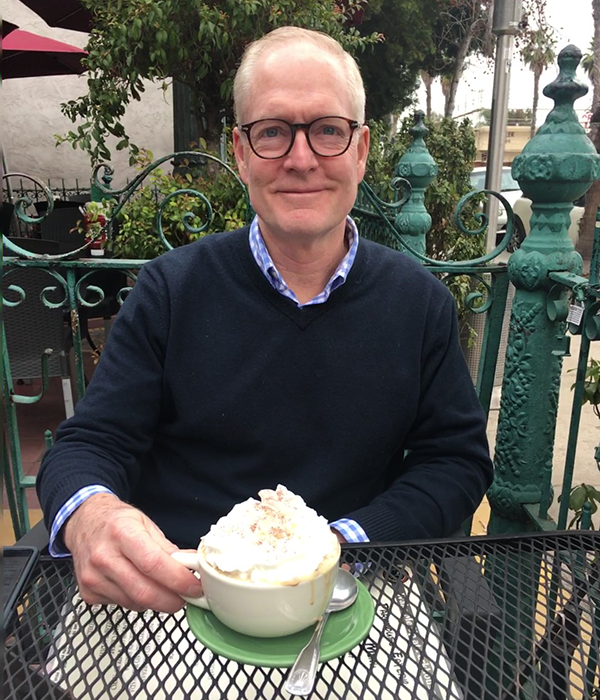
Gillette’s professional path was more circuitous than most. After graduating from Carleton College in Minnesota with a B.A. in biology and philosophy, he attended Oxford University as a Rhodes scholar, where he earned master’s degrees in philosophy and experimental psychology and in human biology. He then earned both an M.D. and a Ph.D. from Harvard Medical School, going on to train at Mass General with a specialization in pulmonary and critical care medicine.
A longtime colleague of Molecular & Cellular Proteomics Deputy Editor Steven Carr, Gillette became an MCP associate editor in 2018. He recently spoke with John Arnst, an ASBMB Today science writer, about working in the intensive care unit at Mass General during the pandemic. Earlier this year, they talked about how Gillette came to work in proteomics. These interviews have been edited for clarity and length.
How has working in the intensive care units been since the coronavirus outbreak hit Massachusetts?
Well, next to New York and New Jersey, Massachusetts has had a particularly difficult time with the pandemic. The state is now approaching 100,000 confirmed cases and 7,000 deaths, but we’re fortunately on the downward slope, at least until the impact of trying to reopen things is fully realized.
The intensive care unit that I work in most of the time, the main medical intensive care unit, is an 18-bed unit. And there’s another mixed medical–surgical intensive care unit I often attend on that typically has an additional 10 or 12 medical ICU patients.
We will sometimes occupy several beds in the cardiac intensive care unit, particularly in the winter in the middle of flu season. So, when things are bad, we might have 32 or 34 beds for medical ICU patients. We got up to more than 180 at our peak occupancy in April.
Our cardiac intensive care unit became a COVID-19 unit. Our neuro ICU became a COVID-19 unit. Our burn unit became a COVID-19 unit. We had adult COVID-19 patients being managed in the pediatric intensive care unit. Half of the postoperative acute care unit was a COVID-19 unit.
Two general floors in one of our buildings have the appropriate physical infrastructure — gas lines, electrical panel, stuff like that — and were converted to COVID-19 units. And that’s just accounting for the critically ill patients. A number of hospital floors were dedicated COVID-19 floors for those who just needed general supportive care and supplemental oxygen.
All kinds of doctors and nurses were stepping in outside of their normal roles and their normal practice to assist — nurses who don’t normally do critical care were doing critical care; physicians who don’t normally do critical care were doing critical care. We’ve had surge staffing in place now for several months, which is supposed to be five days on and five days off, although the five days off is often interrupted with time on.
What did that look like for ICU docs?
The ICU-trained docs were trying to put together detailed protocols to guide other practitioners and were consulting across all the units. Even ICU triage, which is normally a little side role when you’re on service in the intensive care unit, became a dedicated role, and it took a critical care expert working full time to keep up with where patients were, what the capacity was, how to redistribute them and how to load balance across hospitals.
It’s really been an extraordinary time — lots of people stepped up in other ways, even within their domain of expertise. For instance, these critically ill patients often need a fair number of procedures done; they need central line access and arterial lines and things like that.
Normally, that’s all part of our practice. But when you’re as busy as we have been, it’s really difficult to be admitting and managing critically ill patients all over the hospital and getting the procedures done and supervised. And that’s especially true given that we usually rely on residents to be stepping in and doing some of these lower-level procedures once they’re trained; but there was a real objective, especially earlier on in the epidemic, to try to keep trainees out of direct patient-contact situations. Attending-level surgeons and other expert proceduralists formed a specialized team to get this work done quickly and safely.
Another thing that has been really striking is the degree to which the pandemic is revealing the fracture lines in our social fabric. You read these things in the newspaper: “This is another manifestation of systemic racism and class disparities.” But it’s really evident in the hospital because the things that are associated with severe disease — hypertension, diabetes, obesity and heart disease, and to a lesser degree, actually, lung disease — are disproportionately represented in black and Latino populations where the health care needs have historically been systematically under-addressed.
How is the surge in COVID-19 patients affecting the rest of the hospital’s operations?
There was a time when, whichever intensive care unit you walked into, everybody was critically ill from COVID-19. And that was it.
And they all have the same stories. There’s basically one narrative: seven days of malaise, myalgias, a fever and dry cough. Then progressive shortness of breath that brings them to the hospital, where some of them stabilize and others relatively quickly worsen and end up needing to be intubated for acute respiratory distress syndrome.Part of what was so strange is that we normally are very busy and have full intensive care units without patients with COVID-19 and ARDS. The conditions we normally treat didn’t disappear with the onset of COVID-19. So the question became: Where were they all? It really can’t be a good thing that all of the critically ill patients that I would normally be taking care of weren’t there.
There have been a lot of COVID-19 deaths where we’ll never know, because of a lack of testing, whether they were directly attributable to COVID-19. But there is a still larger impact of people who delayed seeking care for other conditions and then came in later than they normally would, sometimes past the point when you could actually help them anymore.
Now that COVID-19 cases are starting to ratchet down, we’re starting to see the patients with liver failure and the patients with strokes, the patients with heart attacks showing up again, so it’s just really clear that people were laying low and deciding that it was better to suffer at home than to go in and risk being infected if they weren’t already infected. And that’s a scary thing.A lot of these COVID-19 patients who are now getting better from their critical illness are going to need sustained periods of rehab. Those numbers are huge, and I don’t think the rehab capacity really exists for that. It’s like a wave; it just keeps going to the next level of care and the next level of care and the next level of care.
What about accounts of people who have recovered from COVID-19 but are now experiencing pain or loss of sensation in their extremities?
There’s just a lot we still don’t really understand about the disease. But one thing has been pretty clear: The patients who get critically ill and have respiratory failure have needed ventilatory support for quite a long time, even relative to severe cases of ARDS.
Regular influenza can sometimes cause severe ARDS, but for the most part, it’ll be a bacterial infection or pancreatitis or something similar that sets it off. And we’re treating the underlying cause at the same time that we’re supporting the patient through the ARDS. But if you don’t have anything that actually treats COVID-19 — I mean, we’ve got encouraging news about remdesivir but not enough remdesivir to be giving it to everybody — if you aren’t treating the underlying disease, then it’s going to continue to drive the illness for a longer period of time.
The longer you’re critically ill and the longer you’re intubated, the more debilitated you’re going to be. And so, even without these other strange complications of coronavirus infection that we’re just beginning to understand and tally, there are going to be patients who need a long time to recover.
As you’re scaling back in the hospital, do you feel like you’re better prepared for when things ramp back up in a few months?
I think there’s the direct answer, and then there’s a sort of caveat. The direct answer is: absolutely.
The foresight and the leadership at our institution were amazing, partly because they had forewarning that New York didn’t have, partly because they were learning from that experience. I think the playbook really is there — how you develop that kind of surge capacity quickly — and there are going to be a lot more practitioners who are familiar with the drill, if you will.
Without wanting to seem strange and macabre, it was kind of exciting to be dealing with this in the early going. I was working really long hours, but I would not have wanted to be doing anything else. I felt like this was stuff I’m trained for.
But the caveat to that is that I do think practitioner fatigue is going to be a pretty serious issue, in addition to the existing concerns about stress and mental health in the general front-line community. While that’s not something that personally I deal with, I am getting tired. If we get a month off and then the cases start to uptick a little bit and then by fall we’re back to this full-surge programming again, that’s going to be hard. Even though we’ll have the playbook, I think that’s going to be, in many ways, harder than the first time.
How did you become interested in proteomics and biomarkers?
We have syndromes that we treat, like severe sepsis. Severe sepsis means that you have either a strong suspicion of an infection or evidence of an infection, and some sort of multisystem organ dysfunction. That has all kinds of different manifestations and different molecular underpinnings in terms of the host response. It remains a relatively lethal condition.
Although progress has been made because of improvements in supportive care and our deployment of critical early interventions, it’s still something where, depending on the center, 25% to 40% of patients who present with severe sepsis succumb to it during their hospital stay.
With those kinds of numbers, as you’d imagine, pharmacologic interventions have been investigated and proposed, and a lot of drugs have gotten into various clinical trials, with some of them in advanced clinical trials. At this point, there are no drugs that are FDA approved for severe sepsis. There was one, Xigris, that became FDA approved and made it into clinical use; it has since been withdrawn for a lack of efficacy and concerning side effects.
The issue is probably not that we have never had drugs that might work but that we have never known the patients to give them to. I was really interested, from that perspective, in precision medicine before it was a kind of buzzword. So 20 years ago, I came over from Mass General and started working at the Center for Genome Research, which became the Broad Institute.
I wanted to work on understanding the molecular underpinnings of disease so that we could stratify patients and could begin to say, even if it’s a retrospective analysis, that there are subgroups that we can define molecularly with biomarkers.
How has your background as a physician informed that research?
I think having a clinical sense of where the important questions lie and what a clinician would want to know is really central, particularly on the biomarker side of things but probably also on the biological discovery side of things.
I find that when I’m working with my proteomics colleagues, my clinical perspective is constantly valuable in helping make sure that people are thinking about the right sorts of samples that we’d want to collect, what the right sort of controls are and which relevant variables we’re going to manage throughout the course of a treatment or project.
Was cardiopulmonology, or being a physician in general, something you thought you were going to do from a young age?
No, it wasn’t one of these things where I grew up having any idea what I was going to do.
I’m a little bit, dispositionally, a dilettante. I had a biology/philosophy double major as an undergraduate. I have a master’s degree in philosophy and experimental psychology, and I have a master’s degree in biological anthropology. I have an M.D., and my Ph.D. is in neurophysiology. I thought coming out of college that I was either going to do environmental law or marine biology.
I had a friend who was going to medical school while I was at Oxford at the time I was collecting these random degrees. During a trip, we were literally sitting on top of Mount Kenya, and it was a gorgeous morning. We were exhausted, and I was getting increasingly concerned in the background about what I was going to do when I left Oxford because I really hadn’t made up my mind at all.
And he said, “I think you should go to medical school because biology and medicine are cool.” He was going to go to medical school. And so I just decided, sitting up there in the thin atmosphere, “Medical school sounds really interesting; I’ll bet I’d really like that.” And I was probably in my second year of medical school before I started to grapple with the idea that, as things would naturally progress, I was probably going to end up being a doctor. I was very interested in brain and mind stuff that combined all of my interests in biology, philosophy and experimental psychology.
I ended up doing a Ph.D. in neuroscience in the middle of medical school, and I expected to do neurosurgery and combine that with neurophysiology, but I couldn’t line up enough surgical rotations early enough to actually do a surgical internship without postponing a year. And I thought, “Well, I’m going to get on with it; I’ll do a medical internship and then I’ll apply in surgery.” In my early rotation as a medical intern at Mass General, I was in the intensive care unit, and the people there were great and the physiology was really cool. And I liked the combination of really sick patients and fascinating ethical problems. So a lot of circumnavigation to get where I ended up.
Do you have any advice for early-career scientists who are starting out?
I would say it’s important to really be assertive and advocate for yourself. I also think you should, at all stages, focus on working with the people you’re excited about and working on problems that you’re passionate about.

a third — enjoy hiking, fishing and skiing, among other hobbies.
Enjoy reading ASBMB Today?
Become a member to receive the print edition four times a year and the digital edition monthly.
Learn moreGet the latest from ASBMB Today
Enter your email address, and we’ll send you a weekly email with recent articles, interviews and more.
Latest in People
People highlights or most popular articles
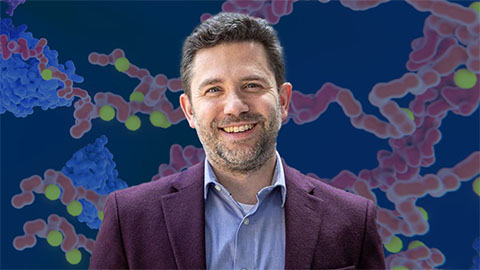
Cotruvo named Blavatnik award finalist
He received a $15,000 prize and was honored at a gala in October.
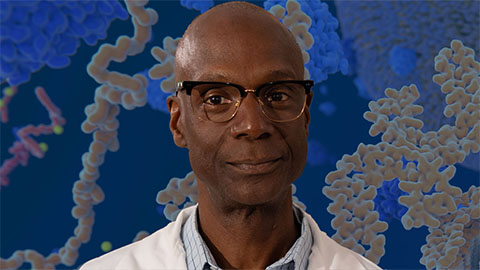
Phosphatases and pupils: A dual legacy
Yale professor Anton Bennett explores how protein tyrosine phosphatases shape disease, while building a legacy of mentorship that expands opportunity and fuels discovery in biochemistry and molecular biology.
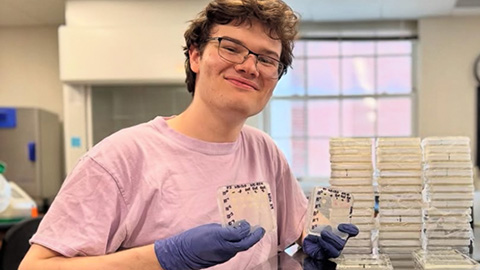
Summer research spotlight
The 2025 Undergraduate Research Award recipients share results and insights from their lab experiences.
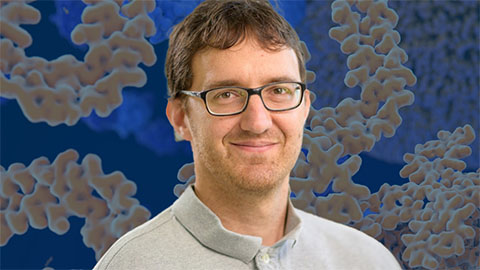
Truttmann recognized for cell stress research
He was honored by the Cell Stress Society International for his work on heat shock protein 70.

Understanding the roles of extracellular matrix and vesicles in valvular disease
MOSAIC scholar Cassandra Clift uses mass spectrometry and multiomics to study cardiovascular calcification and collagen dysregulation, bridging her background in bioengineering and biology to investigate extracellular vesicles and heart disease.

Learning, leading and lifting others
Tigist Tamir’s journey from aspiring astronaut in Ethiopia to cancer researcher at the University of North Carolina highlights the power of mentorship, persistence and curiosity in shaping a scientific career focused on discovery and equity.

